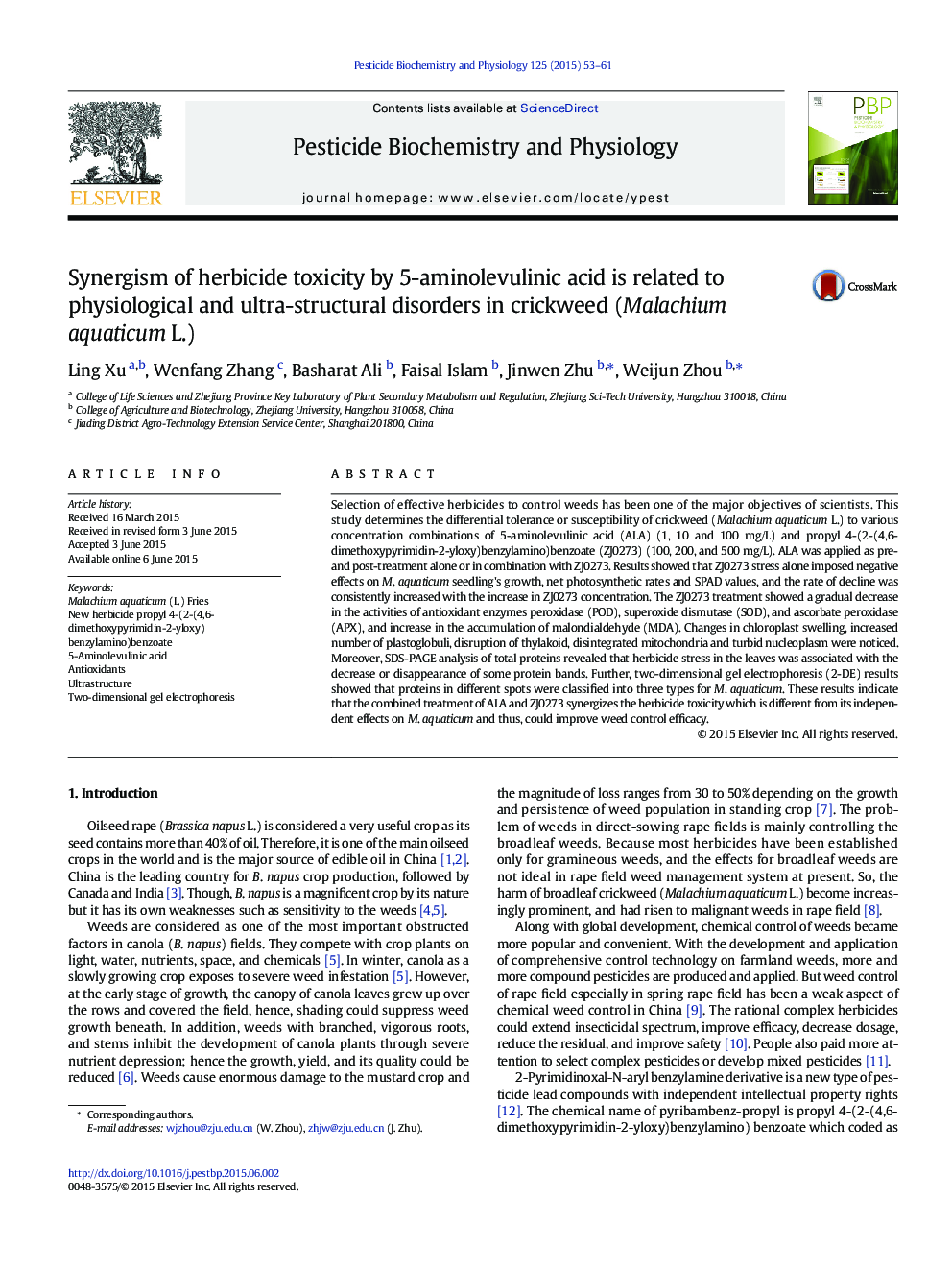| Article ID | Journal | Published Year | Pages | File Type |
|---|---|---|---|---|
| 2009005 | Pesticide Biochemistry and Physiology | 2015 | 9 Pages |
•Combined treatment of ALA and ZJ0273 improves weed control efficacy of crickweed.•Synergism of herbicide toxicity by ALA is related to ultra-structural disorders.•Changes in protein profiles were related to the reactive oxygen scavenging system.•ALA enhanced the herbicidal toxicity on crickweed plants.
Selection of effective herbicides to control weeds has been one of the major objectives of scientists. This study determines the differential tolerance or susceptibility of crickweed (Malachium aquaticum L.) to various concentration combinations of 5-aminolevulinic acid (ALA) (1, 10 and 100 mg/L) and propyl 4-(2-(4,6-dimethoxypyrimidin-2-yloxy)benzylamino)benzoate (ZJ0273) (100, 200, and 500 mg/L). ALA was applied as pre- and post-treatment alone or in combination with ZJ0273. Results showed that ZJ0273 stress alone imposed negative effects on M. aquaticum seedling's growth, net photosynthetic rates and SPAD values, and the rate of decline was consistently increased with the increase in ZJ0273 concentration. The ZJ0273 treatment showed a gradual decrease in the activities of antioxidant enzymes peroxidase (POD), superoxide dismutase (SOD), and ascorbate peroxidase (APX), and increase in the accumulation of malondialdehyde (MDA). Changes in chloroplast swelling, increased number of plastoglobuli, disruption of thylakoid, disintegrated mitochondria and turbid nucleoplasm were noticed. Moreover, SDS-PAGE analysis of total proteins revealed that herbicide stress in the leaves was associated with the decrease or disappearance of some protein bands. Further, two-dimensional gel electrophoresis (2-DE) results showed that proteins in different spots were classified into three types for M. aquaticum. These results indicate that the combined treatment of ALA and ZJ0273 synergizes the herbicide toxicity which is different from its independent effects on M. aquaticum and thus, could improve weed control efficacy.
Graphical abstractFigure optionsDownload full-size imageDownload as PowerPoint slide
